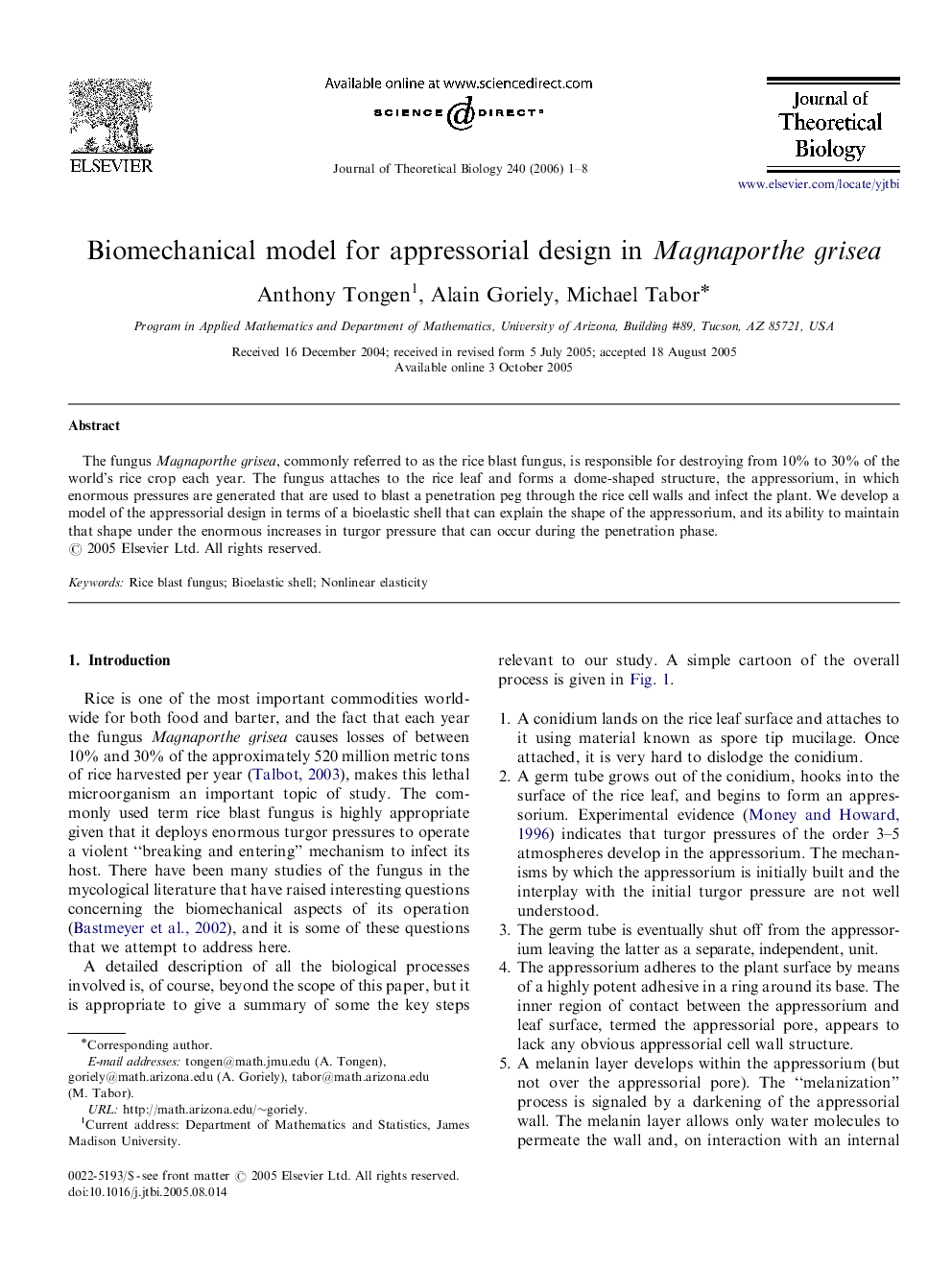| Article ID | Journal | Published Year | Pages | File Type |
|---|---|---|---|---|
| 4499605 | Journal of Theoretical Biology | 2006 | 8 Pages |
Abstract
The fungus Magnaporthe grisea, commonly referred to as the rice blast fungus, is responsible for destroying from 10% to 30% of the world's rice crop each year. The fungus attaches to the rice leaf and forms a dome-shaped structure, the appressorium, in which enormous pressures are generated that are used to blast a penetration peg through the rice cell walls and infect the plant. We develop a model of the appressorial design in terms of a bioelastic shell that can explain the shape of the appressorium, and its ability to maintain that shape under the enormous increases in turgor pressure that can occur during the penetration phase.
Related Topics
Life Sciences
Agricultural and Biological Sciences
Agricultural and Biological Sciences (General)
Authors
Anthony Tongen, Alain Goriely, Michael Tabor,
